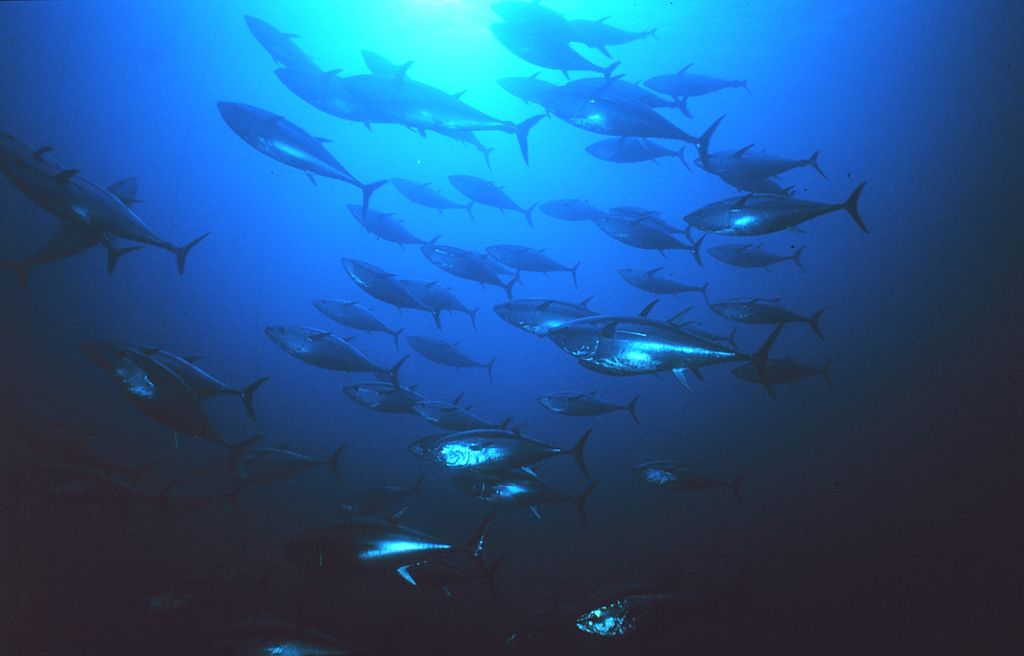 Earth & Space
Earth & Space
How fisheries bring carbon dioxide back to the atmosphere
Global carbon dioxide emissions increasingly rise with adverse climate impacts. Protection and restoration of land and coastal ecosystems are valuable natural climate solutions. In a new study, we introduce open ocean ecosystems as another promising target, revealing how drastically fisheries disturb the carbon cycle.

Today's global warming is increasingly threatening our planet. The Paris Agreement – an international agreement on climate change mitigation – aims to limit global warming to below 1.5-2°C relative to preindustrial levels. To meet this ambitious goal, we may need to drastically cut human-related emissions of carbon dioxide – the primary greenhouse (heat-trapping) gas.
There is also an alternative strategy to slow down climate change – taking advantage of nature's ability to capture atmospheric carbon dioxide and trap it as non-gaseous carbon over a long time. This process is called carbon sequestration. Such natural climate solutions usually involve ecosystems such as forests, grasslands, mangroves and seagrasses, in which plants grow quickly consuming atmospheric carbon dioxide. However, current strategies exclude ecosystems in the open ocean, covering almost half of the Earth's surface. In a new study, we explored open ocean ecosystems to discuss a possible new natural climate solution.
Fish – whose bodies are made up of 10-15% carbon – are key actors in the ocean carbon cycle. When a fish dies, it sinks to the deep-sea floor, where the carbon is sequestered for several decades to centuries. Carbon sequestered in the oceans is called 'blue carbon'. Over the last century, fisheries have been catching commercially important fish such as tuna, mackerel, shark and billfish, thereby reducing their natural carbon sequestration potential. On top of that, fisheries 'extract' the blue carbon from the ocean, where it will be in part reemitted into the atmosphere after fish are consumed on land. Moreover, governments provide fuel subsidies, so that fishing boats can reach places far away from the coast, emitting additional carbon dioxide into the atmosphere.
We set out to assess whether the fish in the open ocean can provide a natural climate solution by investigating the link between fisheries and blue carbon dynamics. To this end, we analyzed fish catch data from the Sea Around Us database from 1950 to 2014 and data estimating the profitability of fishing areas in the high seas (non-territorial sea areas).
We found that fisheries have extracted 37.5 million metric tons of blue carbon from the open ocean since 1950, including 21.8 million metric tons of carbon released back into the atmosphere. Considering additional carbon dioxide emissions from burning fuel, we estimated that 200 million metric tons of carbon were released into the atmosphere as carbon dioxide. This means that the amount of fisheries-emitted carbon dioxide is 25% more than previously thought. Our results suggest that reducing government subsidies may enhance carbon sequestration as almost half of the blue carbon extracted by high-seas fishing comes from areas that would not be profitable without these subsidies.
Our next step is to estimate how promoting sustainable fishing practices (for example, marine protected areas) and limiting subsidies would increase the natural capacity of fish to sequester carbon. It is also important to note that, in this study, we only considered one of the roles of fish in the carbon cycle – the carbon sequestration of their dead bodies on the deep-sea floor. To get a more comprehensive picture of fish-related carbon cycle, further studies should assess the full impact of fish on the carbon cycle in their life span, including respiration and the release of their feces and urine into the ocean. For example, fish urine contains nutrients like phosphorous and nitrogen that are essential for phytoplankton to grow and consume carbon dioxide.
Sustainable fishing – which may improve carbon sequestration – involves various social challenges to minimize tradeoffs especially in developing countries and small islands that rely on fisheries for their economic development and food security. Future studies focusing on these socio-economic factors will allow us to fine tune sustainable use of our ocean and rebuilding of marine life, so that it can be a win-win solution for climate change, biodiversity and human wellbeing.
Original Article:
Mariani, G. et al. Let more big fish sink: Fisheries prevent blue carbon sequestration—half in unprofitable areas. Sci. Adv. 6, eabb4848 (2020).
Edited by:
Dr. Akira Ohkubo , Associate Editor
We thought you might like
Ocean acidification and its effects on coral reef growth
Jul 8, 2016 in Earth & Space | 3.5 min read by Rebecca AlbrightResetting nature’s clock: shifting seasons and species relationships
Sep 14, 2016 in Earth & Space | 3.5 min read by Stephen Thackeray , Sarah BurtheThe silent battle of young corals against ocean acidification
Oct 19, 2016 in Earth & Space | 4 min read by Taryn FosterFor polar bears the cost of living is rising
Mar 13, 2018 in Earth & Space | 4 min read by George DurnerMore from Earth & Space
Discovery of the first radiation belt beyond the Solar System
Jan 27, 2025 in Earth & Space | 3.5 min read by Juan Bautista Climent OliverOne million (paper) satellites
Jan 24, 2025 in Earth & Space | 3 min read by Ewan Wright , Andrew FalleVolcanic Ash: A Nutrient Boost for Reef-Building Corals
Sep 18, 2024 in Earth & Space | 4 min read by Frank Förster , Tom SheldrakeAmmonia Energy: A Call for Environmental Awareness
Aug 29, 2024 in Earth & Space | 3.5 min read by Matteo Bertagni , Robert Socolow , Amilcare PorporatoLikely increase in coral thermal tolerance at a Pacific archipelago
Dec 29, 2023 in Earth & Space | 3 min read by Liam LachsEditor's picks
Trending now
Popular topics


